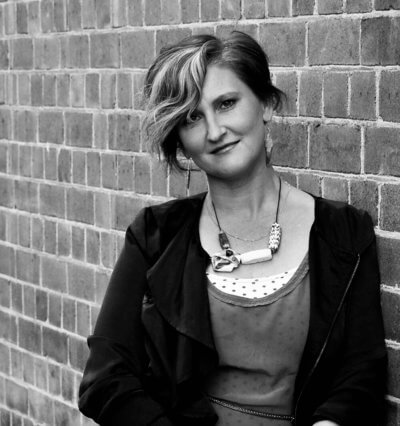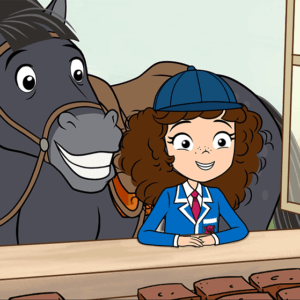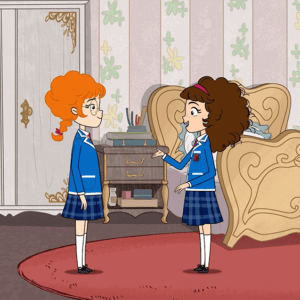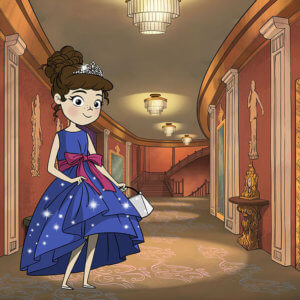Guess How Much I Love Animation: An Interview with Creative Director Jo Boag
SLR Productions is an award winning animation company based in Sydney, Australia and were responsible for creating a large portfolio of heart-warming, action-filled and hilarious modern animated hits like Guess How Much I Love You and Alice-Miranda Forever Friends. We had the opportunity to speak with Jo Boag, to talk about adapting cherished children’s books, what it takes to lead a team creatively and creating a new, original series in a whole new animation style.
In a nutshell, could you explain how you got involved in the animation industry and how it led you to your current position at SLR Productions?
I loved drawing and I was fortunate to have my mother who worked from home when I was at school to look after my sister as she ran a family day care. One of the children she looked after, her Mum happened to work at the Walt Disney Studios, which was in Sydney, so she organised for me – I was fifteen at the time – to get me some work experience. As a fifteen year old it was a very powerful opportunity to see a workplace with real people working and that was in the days of paper animation. So I just saw it as a real thing, it never felt like something that didn’t exist so once I finished I went to art college.
Once I finished art college I just made the effort to get into the industry at whatever level I could get. I did cell animation film painting for a company here in Sydney. And from there I very quickly learnt that I was quite adaptable to different departments. I was moved across into layouts and I became an assistant supervisor, and from there I moved through departments. I really felt like I was a master of none, experience in all things, so I found myself going up through the director chain. I was always interested in the big picture, the big story and managing many people of different kinds of talent. For me I love working with talent creatively and really drawing all those different talents into the one story we are working on.
At SLR Productions one of the shows you directed was Guess How Much I Love You, which celebrated its twenty fifth anniversary of its first publication last year. How did you and the team get involved with adapting the iconic picture book?
That was really down to Suzanne Ryan, the executive producer at SLR. She came across the book and she was in the right place at the right time and I think she just gave the right pitch. We were small enough because I think many other producers tried to take it on, but they wanted to change it and so when we came to the publishers we said that we wanted to make it in animation and we would try to make it be about looking through the eyes of the parent and child, which is how we saw the book, and that opportunity to experience the world through young and old.
I think the publishers liked how we pitched and I think afterwards they were maybe a bit unsure of how this little Australian company got it, but it happened and we were all on board. It was really challenging work to translate because the picture book is so short and doesn’t involve a world as it’s about a very close relationship between Big and Little Nutbrown Hare. Part of the feedback we had as we were pitching it was what is the world? Because children live in a community that thinks of the world with the parents or carers and friends, we created this natural world around these main characters. Really the series was about being a child without culture and school and what does the day bring is really where the story came from. You could show the seasons, and the seasons play a big part and the writers really drew upon all of our experiences of being a child, things that were still very vivid in our minds and experiences they had in terms of being out in the world, in nature. I think it was just the way we pitched it and the quality of our approach, we were lucky to pitch.
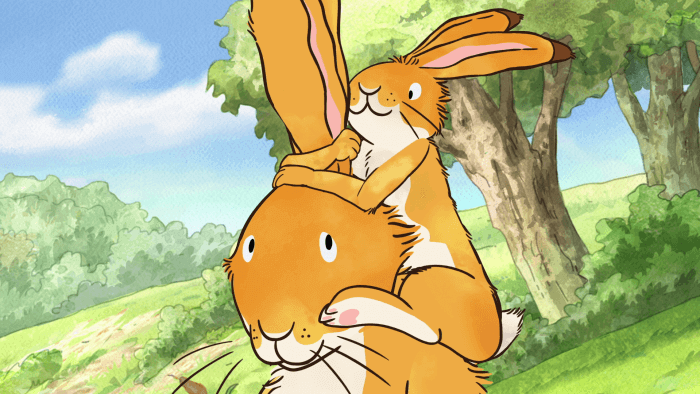
Guess How Much I Love You
What was the process like to turn a short, sweet story into a television series consisting of multiple episodes?
It was challenging because we were sitting in the preschool market which is very bright and quite full of energy. Education was quite a big part of preschool and with our series, we had something that was very traditional. One of the broadcasters said we were ‘not to have a teacher and not let a parent be a teacher’. And that was a key bit of advice for us because we wanted them to be more like walking alongside each other in the experience of whatever they were experiencing so it was very equal. The parent being Big Nutbrown Hare could actually allow the child to look deeper within the experience, and the child, Little Nutbrown Hare could remind the parent to look at things in a new way.
The book is very brown in it’s nature and we had to expand the pages and add colour, and we made distinct creative choices. For example, we always wanted to see the horizon and base the characters around the area where they live because they were always living in the outside world. We also never put any human elements in the show like fences or roads. All those things were key for us creatively to place them in a world parallel to the human world experience. For me it was certainly creatively joyful because it really pushed us to be present and being in the world.
Were there any new obstacles for you directing the show and the holiday specials after your previous work?
Because we had a very strong narrative, which at the time was quite unusual in preschool to have narrative led projects, this was at the time when Disney Junior was getting ready to do launch. They were then looking for narrative-led, as opposed to education led, because a lot of preschool at the time was education led. The episodes didn’t all work the same way which was quite special because we had intentionally created the characters around Little Nutbrown Hare to compliment his naturally curious and open-heartedness. When we got to the specials it was great because we were able to tell a longer story and we were able to up the scale of the drama because we had the time, but we still had to be aware of the core ideas.
The seasonal specials were great because we were able to tell two different stories. The challenge was we had to make it seasonal in a world that doesn’t celebrate seasonal holidays. We took it in the perspective of the seasons, the change of seasons and what do those seasons bring. In “An Enchanting Easter” we wanted to bring in a white deer because she was bigger in scale but still a child and we had seen some white deer when we were doing our research about Albino deer. We saw the story through a child’s perspective, a white deer can hide in winter in the snow, but what happens in spring when they are more visible? And we fused this in a childlike way into the story which is ultimately about friendship and feeling different.
For the Christmas special “Christmas to the Moon and Back” we wanted to do a more dramatic story about what’s the worst thing that can happen to a child; and that was getting lost. We wanted the mother bear to find her little lost bear and that was the core of our story – it was about looking after each other.
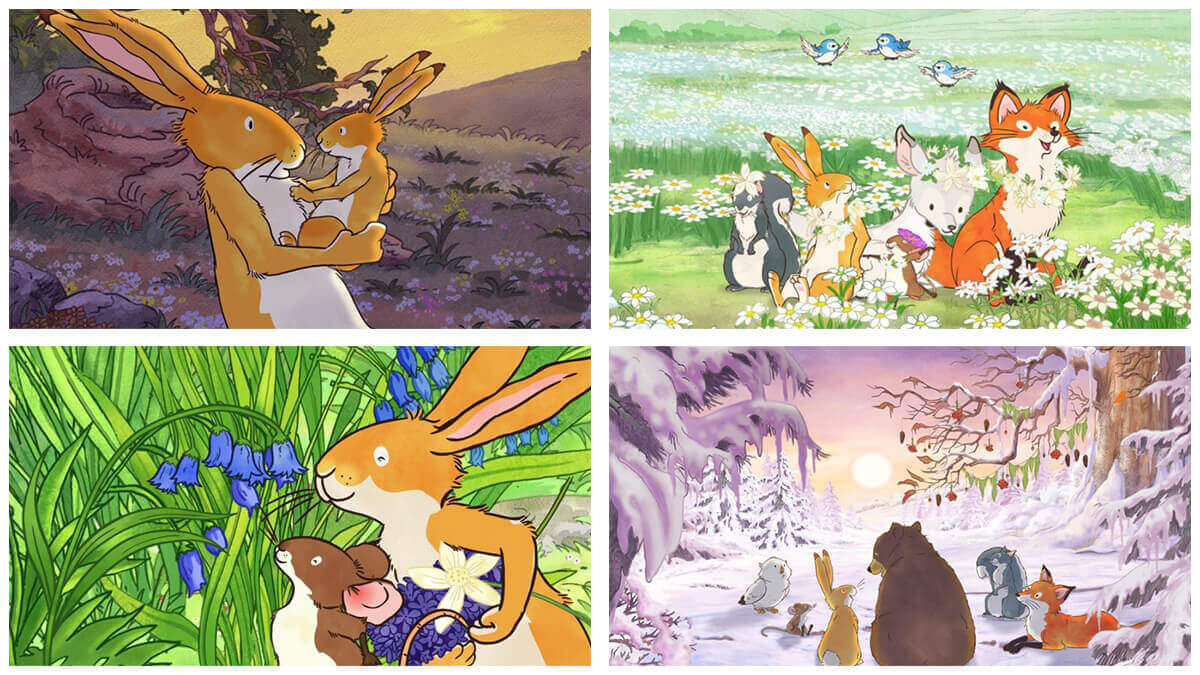
Guess How Much I Love You has been broadcast in multiple countries and been enjoyed by families all over the world, especially in the UK. Did you think the show would become such a huge hit?
It’s obviously an evergreen title, so we felt that there would be recognition of the brand and that’s why it was a challenge of how do we keep the integrity and what is it about it that everyone loves universally.
The hardest thing was how do we do that ritual at the end of every episode, which is obviously what the book does, and I think that’s why it translated across the world. That kind of relationship was at the core of it, which is why it was universal. Also adding to its universality was that every country, even in Australia, has hares and foxes that were all introduced here.
The other thing the broadcasters said to us – a German broadcaster called Ki.ka – said that they felt that they wanted the children watching to turn around and hug their parent. How do we do that without it being it on the nose? That’s a great challenge for the writers to find something within the story that would be able to be that special ritual moment, so a story around snowflakes would have the ritual at the end about loving you as much as all different patterns on a snowflake. It’s not exactly the same every time and that was lovely and playful; some were just silly and some would be heartfelt, but we didn’t want to do that every time because not every ritual is deep in love. Some of them are light and fun and so we were really conscious to balance that and have fun with it.
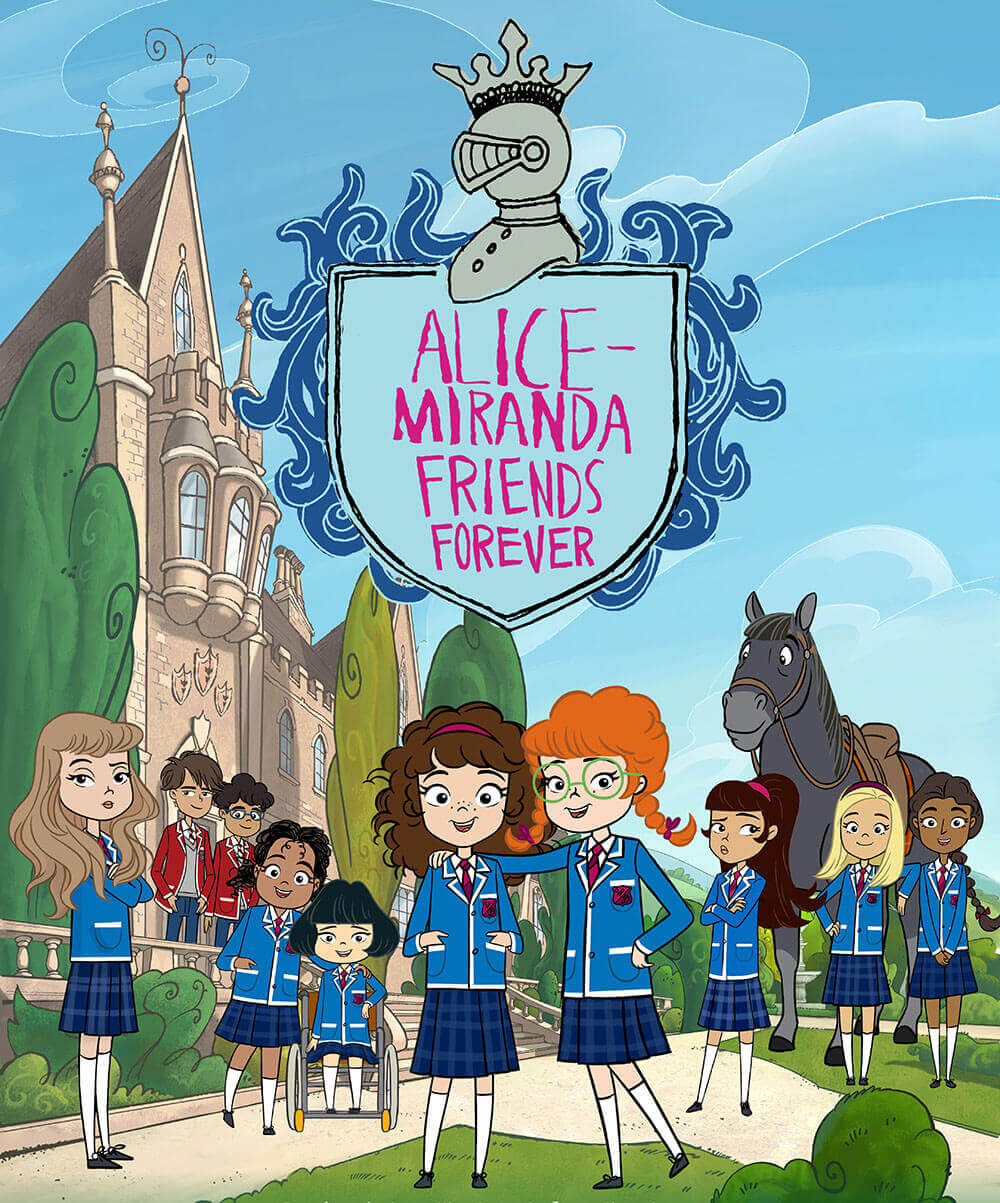
Last year saw the release of Alice-Miranda Forever Friends, an animated film based on a series of children’s books by Jacqueline Harvey. As the film doesn’t have a UK release as of writing this, could you explain to our readers outside Australia what the film is about and how SLR Productions got involved?
The books have sold over a million copies I believe and in Australia it’s sold over seven to eight hundred thousand which is a huge number and it is being sold in multiple territories. The book is about a girl who takes herself off to boarding school and she’s the youngest to attend Winchesterfield-Downsfordvale Academy for Proper Young Ladies and when she gets there, not everything is as it seems. No one has seen the principle in years, everyone is terribly unhappy and she sets out to fix it.
My daughter was reading the books at the time and I was aware of them and the publisher came to us. Jacqueline has written eighteen books for them now and the publishers would publish as much as she writes them and I think the success of the series is that she was a teacher herself at a boarding school and she created a collection of all these different character types of girls she taught over the years.
Alice-Miranda is an exceptionally positive girl which can be challenging. You don’t want to create a character who is perfect and I think what is interesting that Jacqueline did with her was that she made her not judge people and she allows people to have a second chance. She’s a natural detective because she’s curious why things are, but she doesn’t judge people for their actions. She’s a really positive role model of this young girl and she’s kind and trying to do good things and she talks to everyone the same way. She will talk to an adult the same way she talks to a friend. She’s just a very open, kind hearted character.
The publishers approached us and it was a challenge. Animation for girls at that age group is a challenging market because of the age girls leave animation. When they’re eight to twelve years old they watch more live action. Obviously Disney is huge in that market and have created characters that girls are drawn to with that more complex story, so it was challenging to do a girl focused animation series when everybody was doing gender neutral. We thought that she was a delightful character and the opportunity came up to do a movie and in a story perspective it’s much more satisfying to do a deep story like this on a character when mysteries are involved. We were able to do an eighty minute story which was an origin story where we could combine a bigger arc from the first three books.
For me as a director it was a great outcome because I was able to really have a big cast of characters in a deep story with this little girl at the centre of it who quietly goes about changing things. It’s not that she gives things to people, it’s the time she gives them all. She’s a very unselfish and proactive person in the world.
With your previous work on adapting the pages of Guess How Much I Love You, were there any new challenges with adapting Alice-Miranda for an older audience?
One of the great things I enjoyed taking away from Guess How Much I Love You is working with children. We very much wanted to have real children play the characters because it was really important to make that voice feel authentic, so that’s something I did takeaway because I directed all the voice work on the Guess How Much I Love You series and the specials. But from directing those I learnt so much about how to direct the performance and still feel authentic without professional actors.
I was able to bring that into Alice-Miranda Forever Friends. The challenge was to tell a complex story and a much bigger story over eighty minutes, which is different to telling it in twenty two minutes. The story beats and the way you resolve them are obviously very economical.
In my mind they were three episodes that were stitched together, that helped us to break it down for the scale. It just made it feel like it wasn’t a big movie. The challenge was getting those story points and have them big enough so they wouldn’t drag in the middle.
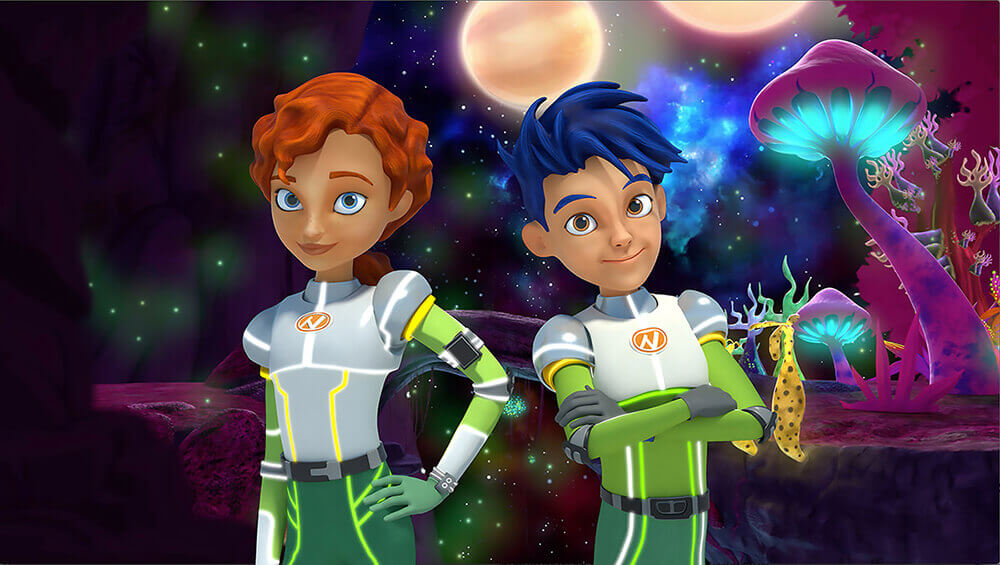
Space Nova
As well as directing Alice-Miranda: A Royal Christmas Ball, you are also working on Space Nova, a computer animated television series. With SLR Productions’ previous work being more traditional animation, what was it like to transition from one animation style to the other?
That has been a big learning curve for us, but in areas that are more technical as opposed to storytelling or design work. Space Nova is a 3D show, it’s also an action 3D show because it’s set in space which means from the very onset as a creative I just knew it would be challenging because it’s very high concept. When you work on several shows, you have different mind challenges in the sense that as a director you really have to be aware of the obvious places that people would go with designs. For many years I’ve always taken upon myself to actually find the opportunity to think outside and give clear direction to the artists.
Particularly now with the availability of so much inspiration on the internet and the world. There are still stereotypes that are brought up when you’re working on the big scheme of things. When we’re working on designs for example a bus driver, it’s really important we don’t draw a grey-haired middle aged man with glasses, which is what people would draw. So I will intentionally pull out some references which has the bus driver as a young Indian woman or a young woman who’s very sporty.
So when we develop a show like Space Nova, set one hundred and fifty years in the future, it’s what is it going to be like? So if a character drinks from a cup or a cup is sitting on the table, we have to think how is this cup portrayed in the future? Or how is this screwdriver portrayed in the future? Would it be manual? Would it be electronic? That means you have more thinking time and exploration time within the process. That leads to obviously a bit more time and pressure on all of the designers and in the production.
So getting into that space in Space Nova was challenging because we had to be more accurate with our modelling and our drawing in 2D. We designed sets and a character would be too big to fit through the door because the set of the room did not have the right scale proportion. There are things that were unpredictable that were challenges and we learnt pretty quickly. And of course the pipeline is more extended because of the nature of the different processes you need to go through.
Coming from a quality of TV design does mean that we know that we have the same principles in place. You have to make a decision on your design; on your story at every stage of production. You don’t often get to do science fiction in children’s television, so we all felt very lucky.
Back in 2015, women working in animation were only represented by an estimated 20%, a year after you won the Creative of the Year from B&T Women in Media. With SLR representing women in their high profile positions, do you feel that the animation industry has changed to improve employment for women?
It’s interesting because I think when I first started out there was probably a gender in-balance, but I was never made to feel that, it could just be the industry here. It never made me feel less worthy. I think the great thing I love about this industry is it’s very much about what you could bring to the table. It doesn’t matter where you studied, or where you came from, or where you do it, even.
If you can deliver the quality within the time-frame, you’ve got the job. That’s the reality of what’s required, you need people who have the advantage of the skillset to deliver.
In terms of SLR, Suzanne Ryan set up the company and I think she probably did as we had worked at places where tensions would lead to the way people would treat you, so I think she was determined to create a workplace that would be somewhere that she would love to work as well. We have three directors on Space Nova, two of them are women, women who have been working for a long time and worked in different areas of animation. But if you look at what they’ve done, they are directors, it’s just they didn’t have that title of director.
I think the change in environment makes it seem more like they’re opening up the doors more, but it’s really to their benefit that they look further. I know a lot of women who have never felt like they were accepted fully in their industry. I understand that my experience does not define what the experience for other women is. I have been lucky to work with supportive women and men. At SLR, we just look for people who can bring their creative talent into collaboration. I just love that I can look at someone’s drawing and I don’t even know their name and I can tell that they have got what I need. And that’s how everything should be based on.



